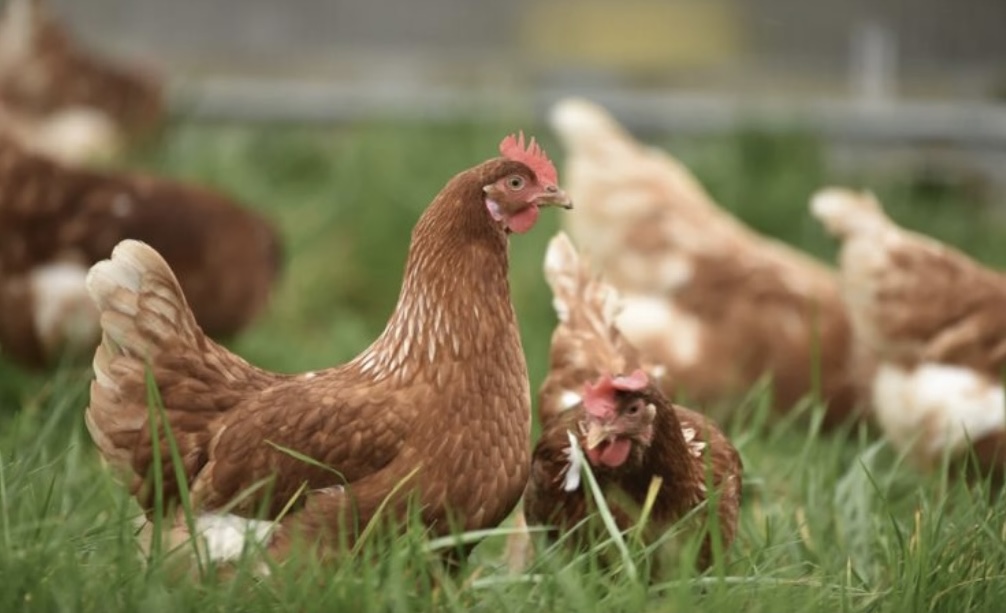Highly pathogenic avian influenza (HPAI) H5N1 has been confirmed in other captive birds at a premises near Fownhope, Herefordshire.
More details on this can be found below.
From – Department for Environment, Food & Rural Affairs and Animal and Plant Health Agency
Avian influenza prevention zone (AIPZ)
From 00:01 on Sunday 16 February 2025 the AIPZ housing measures have been extended to cover Herefordshire, Worcestershire, Cheshire, Merseyside and Lancashire in addition to the East Riding of Yorkshire, City of Kingston Upon Hull, Lincolnshire, Norfolk, Suffolk, Shropshire, York and North Yorkshire.
The England wide AIPZ mandating enhanced biosecurity in all other counties remains in force.
Check the interactive map to see if you are in an area now covered by mandatory housing measures and the AIPZ declaration for further details of the measures which apply.
Take action to prevent bird flu and stop it spreading. Be vigilant for signs of disease and report it to keep your birds safe.
25 February 2025
Highly pathogenic avian influenza (HPAI) H5N1 was confirmed in other captive birds at a premises near Fownhope, Herefordshire, Herefordshire (AIV 2025/23)
A 3km captive bird (monitoring) controlled zone has been declared around the premises. The affected birds on the premises will be humanely culled.
More information on this outbreak can be found by visiting – https://assets.publishing.service.gov.uk/media/67be41b616dc9038974dbb38/AIV_2025-23_DPR_2025-39_CaptiveBirdControlledZone_20250225.pdf
23 February 2025
Following successful completion of disease control activities and surveillance in the zone around a premises near Loddon, South Norfolk, Norfolk (AIV 2025/12), the 3km protection zone has ended and the area that formed it becomes a surveillance zone.
Influenza of avian origin in wildlife
Influenza of avian origin has been detected in a small number of grey seals on the North Norfolk Coast, and we are aware that avian influenza has also been detected in wild birds in the area.
Mammals which have had close contact with infected wild birds or contaminated environments can become infected with influenza of avian origin.
The numbers involved were not above the usual annual mortality level at this site and this finding is evidence of the effectiveness of the UK’s wildlife surveillance system. There is no evidence to suggest an increased risk to non-avian wildlife.
Find out how we monitor the risk of influenza of avian origin in wild mammals.
Poultry gatherings banned from 10 February 2025
From midday on Monday 10 February 2025 bird gatherings of poultry, galliforme or anseriforme birds are banned in England. This includes ducks, geese, swans, pheasants, partridge, quail, chickens, turkeys and guinea fowl.
Gatherings of other captive birds will continue to be permitted, providing you follow and meet all the requirements of the captive bird gathering general licence.
Find out what counts as a bird gathering.
Check if you’re in a bird flu disease zone on the map.
If you’re in a bird flu disease control zone you must follow the rules for that zone and check if you need a licence to move poultry, poultry by-products, eggs, material or mammals.
Practising good biosecurity at all times protects the health and welfare of your birds and for commercial keepers will help protect your business from HPAI and other diseases.
Find out what you can do to prevent bird flu and stop it spreading and how to spot and report it in poultry or other captive birds.
Avian influenza prevention zones – how you’re affected
Cases of highly pathogenic avian influenza (bird flu) are increasing in both kept poultry and wild birds across multiple areas of Great Britain.
To prevent further spread of disease, an avian influenza prevention zone (AIPZ) mandating enhanced biosecurity is in force across England. A similar zone is in force in Scotland and Wales.
In addition, mandatory housing measures for all kept birds are in force in the East Riding of Yorkshire, City of Kingston upon Hull, Lincolnshire, Norfolk and Suffolk and the unitary authorities of Shropshire, York and North Yorkshire. From 00:01 on Sunday 16 February 2025 these mandatory housing measures have been extended to also include Herefordshire, Worcestershire, Cheshire, Merseyside and Lancashire.
To find out which measures apply to you and your kept birds, check the interactive map and read the AIPZ declaration schedule relevant to your area.
These measures will be in place until further notice. They will be kept under regular review as part of the government’s work to monitor and manage the risks of avian influenza.
These measures apply to all bird keepers whether you have pet birds, commercial flocks or just a few birds in your garden and are essential to protect your birds from avian influenza.
All bird flu cases and disease control zones
The first case of highly pathogenic avian influenza (HPAI) H5N5 of the current outbreak was confirmed in England on the 5 November 2024.
The first case of HPAI H5N1 of the current outbreak was confirmed in:
- England on 17 November 2024
- Scotland on 10 January 2025
Whilst there have been no cases of HPAIconfirmed in Wales during this outbreak, in line with World Organisation for Animal Health (WOAH) rules Great Britain is no longer free from highly pathogenic avian influenza.
No cases of HPAI have been confirmed in Northern Ireland this season and Northern Ireland continues to have WOAH self-declared zonal freedom from highly pathogenic avian influenza.
Find details of all bird flu cases and disease zones in England.
The table below lists the number of confirmed cases of HPAI during the current outbreak.
| HPAIH5N5 | HPAIH5N1 | |
|---|---|---|
| England | 1 | 37 |
| Scotland | 0 | 1 |
| Wales | 0 | 0 |
| Northern Ireland | 0 | 2 |
| Total | 1 | 40 |
Overall total: 41
The last outbreak of HPAI in poultry and other captive birds in the UK prior to the outbreak on 5 November 2024 occurred on 14 February 2024.
Find details of previous bird flu cases and disease zones in England.
Find details of previous bird flu cases in Scotland, cases in Wales and cases in Northern Ireland.
Find details and assessments of past outbreaks in Great Britain in the Animal and Plant Health Agency’s outbreak epidemiology reports.



